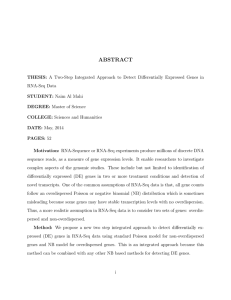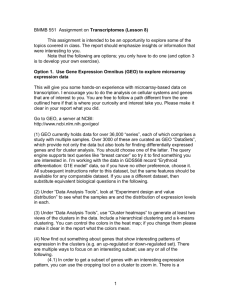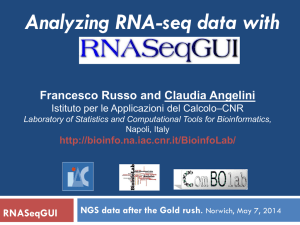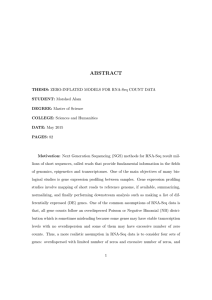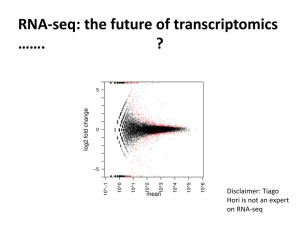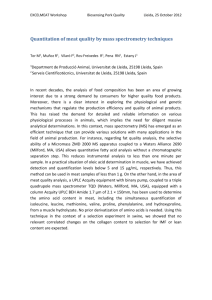RNA-Seq liver transcriptome profile in pigs with extreme phenotypes
advertisement
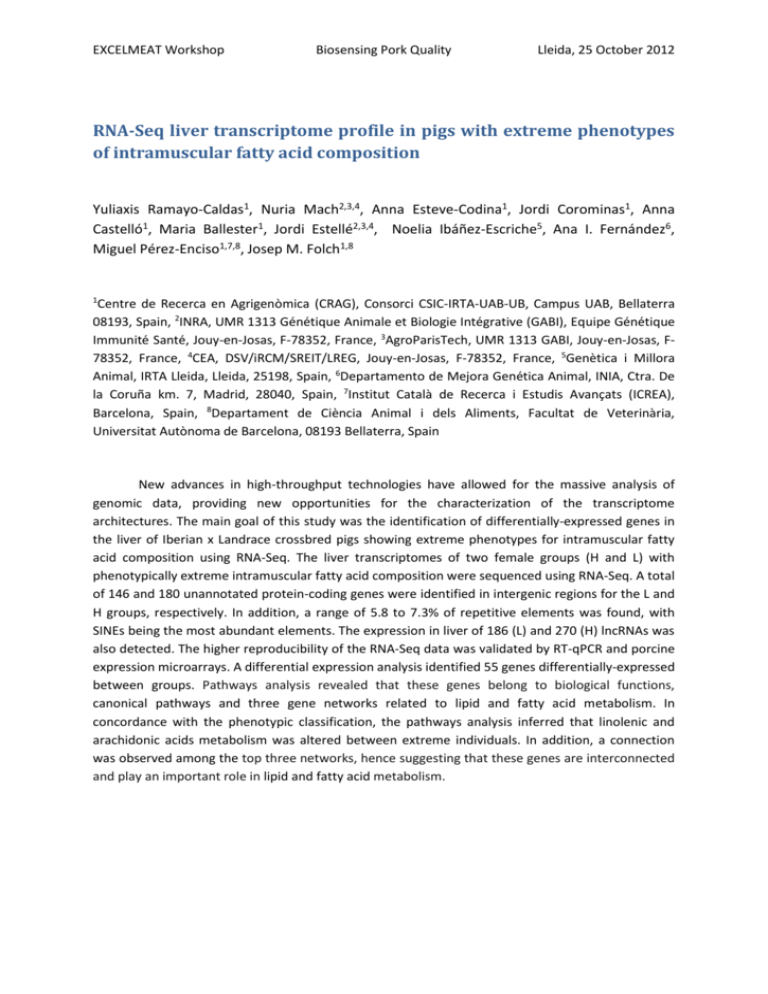
EXCELMEAT Workshop Biosensing Pork Quality Lleida, 25 October 2012 RNA-Seq liver transcriptome profile in pigs with extreme phenotypes of intramuscular fatty acid composition Yuliaxis Ramayo-Caldas1, Nuria Mach2,3,4, Anna Esteve-Codina1, Jordi Corominas1, Anna Castelló1, Maria Ballester1, Jordi Estellé2,3,4, Noelia Ibáñez-Escriche5, Ana I. Fernández6, Miguel Pérez-Enciso1,7,8, Josep M. Folch1,8 1 Centre de Recerca en Agrigenòmica (CRAG), Consorci CSIC-IRTA-UAB-UB, Campus UAB, Bellaterra 08193, Spain, 2INRA, UMR 1313 Génétique Animale et Biologie Intégrative (GABI), Equipe Génétique Immunité Santé, Jouy-en-Josas, F-78352, France, 3AgroParisTech, UMR 1313 GABI, Jouy-en-Josas, F78352, France, 4CEA, DSV/iRCM/SREIT/LREG, Jouy-en-Josas, F-78352, France, 5Genètica i Millora Animal, IRTA Lleida, Lleida, 25198, Spain, 6Departamento de Mejora Genética Animal, INIA, Ctra. De la Coruña km. 7, Madrid, 28040, Spain, 7Institut Català de Recerca i Estudis Avançats (ICREA), Barcelona, Spain, 8Departament de Ciència Animal i dels Aliments, Facultat de Veterinària, Universitat Autònoma de Barcelona, 08193 Bellaterra, Spain New advances in high-throughput technologies have allowed for the massive analysis of genomic data, providing new opportunities for the characterization of the transcriptome architectures. The main goal of this study was the identification of differentially-expressed genes in the liver of Iberian x Landrace crossbred pigs showing extreme phenotypes for intramuscular fatty acid composition using RNA-Seq. The liver transcriptomes of two female groups (H and L) with phenotypically extreme intramuscular fatty acid composition were sequenced using RNA-Seq. A total of 146 and 180 unannotated protein-coding genes were identified in intergenic regions for the L and H groups, respectively. In addition, a range of 5.8 to 7.3% of repetitive elements was found, with SINEs being the most abundant elements. The expression in liver of 186 (L) and 270 (H) lncRNAs was also detected. The higher reproducibility of the RNA-Seq data was validated by RT-qPCR and porcine expression microarrays. A differential expression analysis identified 55 genes differentially-expressed between groups. Pathways analysis revealed that these genes belong to biological functions, canonical pathways and three gene networks related to lipid and fatty acid metabolism. In concordance with the phenotypic classification, the pathways analysis inferred that linolenic and arachidonic acids metabolism was altered between extreme individuals. In addition, a connection was observed among the top three networks, hence suggesting that these genes are interconnected and play an important role in lipid and fatty acid metabolism.
